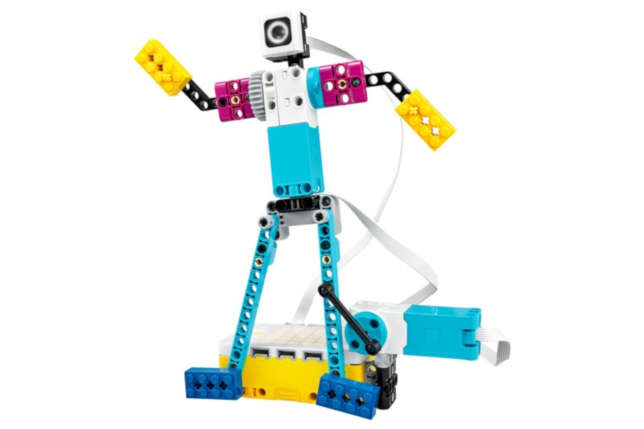LEGO Education Releases Middle School Lessons and Teacher Guides
- By Dian Schaffhauser
- 08/27/20
LEGO
Education
is priming to help teachers in the new school year with initiatives
intended to serve learning, whether it takes place in person or
remotely. New programs include STEM lessons that include physical
movement; downloadable
teacher and parent guides;
and a new online teacher community. Although the resources are all
available at no cost, some may require access to LEGO or other
products that aren't free.
A
new unit called "Training Trackers" will teach core science
and math concepts using with LEGO's LEGO
Education SPIKE Prime,
intended for use with middle schoolers. The unit has seven lessons
focused on physical science and data, including new coding blocks
that improve on data collection and visualization. In the lessons
students learn about kinetic energy, speed, potential energy and
other concepts as they "stretch, walk and squat-jump," to
collect data for analysis and interpretation. Each lesson plan
identifies which learning stages can be completed asynchronously or
in person, for hybrid learning scenarios.

The
SPIKE Prime Training Trackers unit will be available this fall in
English on legoeducation.com/lessons
and will automatically download to the SPIKE
App in
a new software update. Additional languages supported by the SPIKE
App are expected later in the year.
SPIKE
Prime uses LEGO building elements, hardware and a drag-and-drop
coding language based on Scratch
or text-based coding with Python, to push students to tackle complex
problems.
For virtual learning with SPIKE Prime, LEGO Education has worked with CoderZ
to produce a virtual SPIKE Prime experience, enabling
students to practice coding and STEAM skills in an online-only
setting. The online experiences are intended to complement hands-on
building activities with a physical SPIKE Prime Set, either before or
in parallel.
"It's
more important than ever to continue learning through play--wherever
the learning happens," said Esben Stærk, president of LEGO
Education, in a press release. "LEGO Education solutions provide
playful learning experiences that not only teach important STEAM
skills, but also social and emotional skills that together help build
the confidence and resilience needed among students, teachers, and
parents to rebuild and thrive this school year--and for years to
come."
The
new teacher and parent guides, each two or three pages long, are
intended to help people adapt LEGO Education lessons to virtual
versions. They include tips on preparing for online learning,
engaging online learners whose interest is flagging and managing
materials at home. The lessons incorporate social aspects ("Try
opening the virtual classroom a few minutes early and keeping it open
for a few minutes after to allow time for your students to get
settled and socialize"), screen breaks (recommended for every 30
to 45 minutes) and emotional development guidance for parents ("...If
your child gets frustrated, guide them past their emotional response
by discussing the source of their frustration. Make sure they know
that you understand why they're frustrated, and that it's OK to feel
that way...").
Earlier
this summer, LEGO also launched an education
community,
where educators can do lesson plan exchanges, participate in
discussions and get updates from the company.
One
participant, Jacob Woolcock, the head of computing and digital
learning for Penpol
School
in Hayle, Cornwall, described the community as "a diverse and
exciting group of educators willing to share their expertise, as well
as learn from others and take these skills back to the children we
teach." Woolcock is a member of the newest cohort of LEGO
Education "Master
Educators,"
a volunteer ambassador program for teachers who use LEGO Education
resources in their everyday teaching. He said that "sharing and
collaborating on ideas with other teachers from around the world will
be an incredible resource for both new and experienced teachers,
especially as we look to adapt and continue learning in the new
school year."
About the Author
Dian Schaffhauser is a former senior contributing editor for 1105 Media's education publications THE Journal, Campus Technology and Spaces4Learning.